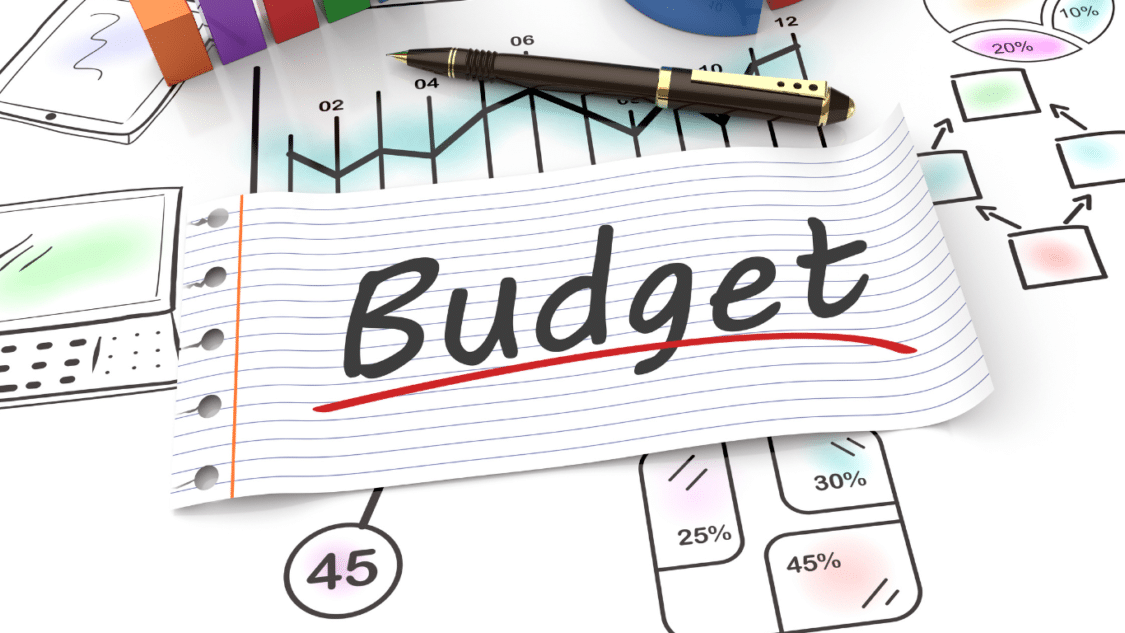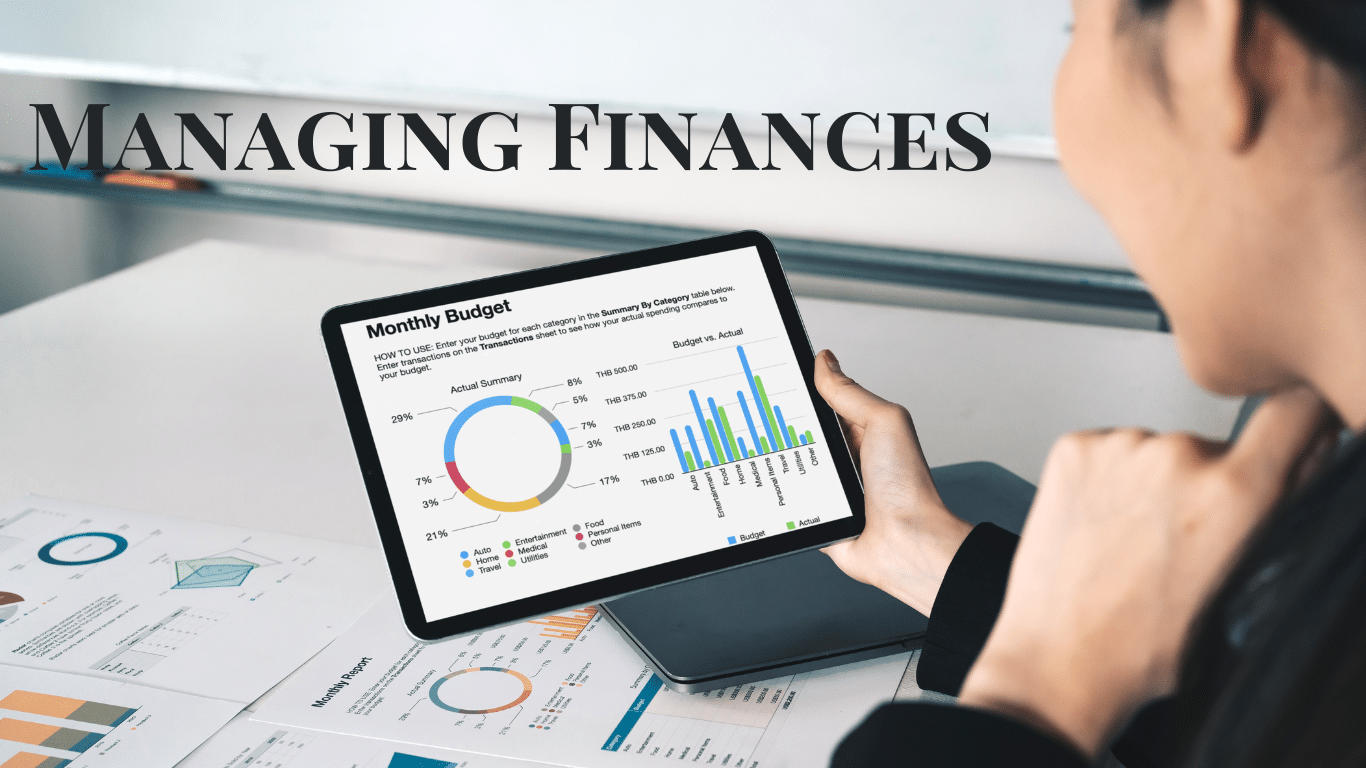Managing your finances in Australia effectively requires discipline and planning. Here are the steps to start managing your finances in Australia:
- Budgeting involves understanding your income, expenses, debts, and assets. You can do this by creating a budget or tracking your spending.
- Diversified Assets – Investing in diversified assets is a great way to keep your portfolio well-balanced.
- Manage debts- If you have debts, create a plan to pay them off. This may involve paying off high-interest debts first or consolidating debts into a lower-interest loan.
- Retirement Saving – Consider saving money for the future by investing in retirement accounts or other things that can help you accumulate wealth over time.
- Taxes – Filing your taxes accurately is crucial to avoid penalties and interest charges.
- Build an emergency fund – In the case of unforeseen costs or a job loss, an emergency fund might serve as a safety net. Save enough money to cover your costs for three to six months.
By following these steps, you can start managing your finances in Australia effectively and achieve financial stability over time.
Budget:
The initial step in managing your finances in Australia can be as easy as creating a realistic budget that works for you.

- Determine your income: Start by calculating your total income. This should include your salary, any additional income streams, and any other sources of funds.
- Identify your expenses: Bills, groceries, rent/mortgage, transportation, entertainment, and other miscellaneous costs.
- Categorize your expenses: Divide your expenses into fixed and variable categories. Fixed payments remain the same each month, while variable costs change monthly.
- Set your priorities: Prioritize your expenses based on their importance. This will help determine which costs you can cut back on if needed.
- Set realistic goals: Set actual savings and debt repayment goals based on your income and expenses.
Once you have created your budget, here are some tips for sticking to it in the process of managing your finances in Australia:
-Use a budgeting tool: Many budgeting apps and software are available to help you track your expenses and stay on top of your budget.
-Automate your finances: To ensure you always remember a payment, set up recurring withdrawals from your savings and bill payments.
-Limit your discretionary spending: Limit your spending on non-essential items like dining out or entertainment.
-Find cheaper alternatives for your regular expenses, such as switching to a lower-cost phone plan or buying generic brands at the grocery store.
Try the following to keep track of your spending and find places where you may make savings when managing your finances in Australia:
What is the best way to manage finances?
Using an app to track your monthly expenses can be a big help. Review your spending monthly and compare it to your budget. This will help you identify areas where overspending is common. Look for opportunities to reduce costs, such as cutting back on dining out or cancelling subscriptions you no longer need. Use your findings to adjust your budget accordingly, making changes to your spending and savings goals as necessary.
Invest in diversified assets:
Choosing the proper investment strategy for your goals and risk tolerance can be a daunting task, but here are some steps to help you make an informed decision as you are managing your finances in Australia:
- Investment goals: Identify your investment goals, such as long-term growth, income, or capital preservation.
- Risk tolerance: Determine how much risk you are comfortable taking on. This will depend on your financial situation, investment goals, and personal preferences.
- Investment options: There are many investment choices available, such as stocks, bonds, mutual funds, exchange-traded funds (ETFs), real estate, and more. Each investment type has its own risk and return characteristics, so it’s essential to understand each option before investing.
- Diversified investment portfolio: Diversification reduces risk and maximizes returns. This means spreading your investments through different asset classes, industries, and geographies.
- Rebalance your portfolio regularly: As your investment portfolio grows and your goals and risk tolerance change, it’s essential to frequently rebalance your portfolio to ensure it remains aligned with your investment strategy.
What are the risks and benefits of different types of investments?
- Stocks: Stocks offer the chance for high returns but also carry significant risks, such as market volatility and the potential for investment loss.
- Bonds: Bonds are considered less risky than stocks but offer lower returns. They may be a good option for investors looking for a steady income stream.
- Mutual funds and ETFs: These investment vehicles offer diversification and professional management but come with fees and expenses that can eat into your returns.
- Real estate: Real estate can offer income and capital appreciation but requires a significant upfront investment and can be illiquid.
How to maximize returns while minimizing risk?
As mentioned above, diversification can help reduce risk and maximize returns. Additionally, investing long-term can help smooth out short-term market volatility and provide more significant growth potential. Consider low-cost index funds and ETFs; these investments offer broad market exposure and low fees, making them cost-effective. Lastly, trying to time the market can be risky, often leading to lower returns. Instead, focus on investing regularly and staying disciplined over the long term.
By following these strategies, you can build a well-diversified investment portfolio that aligns with your goals and risk tolerance while maximizing your returns and minimizing your risk while managing your finances in Australia.
Managing debt:
Managing debt is an essential aspect of personal finance. Here are some steps and strategies to help you while managing your finances in Australia:

- Prioritize debts: List all your debts, including the interest rates and minimum payments. Prioritize your debts by paying off the highest interest rates first, as they will cost you the most in the long run. You may also want to consider paying off debts with smaller balances first, as this can provide a sense of accomplishment and momentum.
- Negotiate with creditors: If payments have become complicated, you may be able to negotiate with your creditors for lower interest rates, waived fees, or a more manageable payment plan. Be honest about your financial situation, and don’t be afraid to ask for help.
- Consider debt consolidation or refinancing: Debt consolidation or refinancing may be a good option if you have multiple high-interest debts. This involves combining your debts into a single loan with a low-interest rate or longer repayment term, which can help you save money on interest and simplify your payments. However, it’s essential to carefully evaluate the terms and fees of any consolidation or refinancing options, as they may not always be the best choice.
- Develop a repayment plan: Once you have prioritized your debts and considered your options for consolidation or refinancing, develop a repayment plan that works for you. This may involve increasing your income, reducing expenses, or making extra payments on your highest-interest debts.
- Monitor your credit score: Paying off debt can positively impact your credit score, but monitoring your credit report and the score is essential to ensure no errors or fraudulent activity.
By following these strategies and tips, you can properly manage your debt and work towards becoming debt-free.
Retirement Saving:
Retirement savings are an essential part of financial planning. Here are some steps and strategies to help you with your retirement savings while managing your finances in Australia.
- Determine your retirement savings goal: Start by estimating how much you will need for retirement based on your desired lifestyle and expected expenses. This will help you determine how much you need to save.
- Develop a savings plan: Once you have determined your retirement savings goal, develop a savings plan that works for you. This may involve contributing a set amount each month, increasing your contributions over time, or using the benefits of catch-up contributions if you are over 50.
- Maximize your superannuation contributions: Superannuation contributions are an effective way to save for retirement, as they offer tax benefits and compound interest over time. Consider making voluntary contributions to your superannuation account to maximize your savings.
- Choose suitable investment options: Your superannuation account may offer various investment options, such as shares, bonds, and property. When selecting the appropriate alternatives for your account, consider your investment objectives and risk tolerance.
- Review and adjust your plan regularly: Your retirement savings plan should be reviewed and revised regularly as your financial situation and retirement goals change. This may involve increasing your contributions, adjusting your investment strategy, or exploring other retirement savings options.
What are some tips for maximizing superannuation contributions?
- Take advantage of employer contributions: Your employer may offer contributions to your superannuation account, which can help boost your savings.
- Make voluntary contributions: Consider adding additional contributions to your superannuation account to maximize your savings and take advantage of tax benefits.
- Use catch-up contributions: If you are over 50, you may be eligible to benefit from catch-up contributions to your superannuation account, which can help you save more for retirement.
Consider a few things when choosing suitable investment options for your superannuation account. Firstly, investment goals include growth, income, or capital preservation. Next, determine how much risk you are comfortable taking on based on your financial situation and investment goals. Lastly, choose a mix of investment options that offer diversification across different asset classes and industries.
Taxes
Here are tips on filing taxes accurately and on time when managing your finances in Australia:

1. Gather all necessary documents: Collect all the documents needed to file your taxes, such as W-2 forms, 1099 forms, receipts for deductible expenses, and records of any charitable donations.
2. Determine your filing status: Filing status depends on your marital status and whether you have dependents. Choose the filing status that applies to your situation.
3. Choose your method of filing: You can file your taxes online or by mail. Filing online is typically faster and more convenient, but if you file by mail, send your tax return before the deadline.
4. Use tax preparation software or a tax professional: You can file your taxes properly and ensure you use all the deductions and credits you are entitled to with tax preparation software or a tax expert.
How to minimize tax liability while managing your finances in Australia?
– Maximize your deductions and credits: Take advantage of all the deductions and credits you are eligible for to reduce your taxable income while managing your finances in Australia.
– Contribute to tax-advantaged accounts: Contributing to tax-advantaged accounts, such as a 401(k) or individual retirement account (IRA), can help reduce your taxable income and save you money on taxes.
– Consider tax-loss harvesting: Tax-loss harvesting involves selling investments that have decreased in value to offset gains in other investments, which can help reduce your tax liability.
– Timing your income and expenses: You can lower your tax liability by timing your income and expenses to maximize your deductions and credits.
– Consult a tax professional: A tax professional helps you navigate the tax code and identify strategies for minimizing tax liability while managing your finances in Australia.
By following these tips and strategies, you can file your taxes accurately and on time while minimizing your tax liability as you are managing your finances in Australia.
Emergency Fund
How much money should I aim to save in my emergency fund?
The rule of thumb is to save at least three to six months of living expenses in your emergency fund. Your circumstances, like your job stability, income, and fees, may affect this amount. For example, if you have a stable job and low fees, you may be comfortable with a smaller emergency fund, while if you have a less steady income or high costs, you may want to save more.
What are some strategies for building an emergency fund efficiently while managing your finances in Australia?
One effective way to build an emergency fund quickly and efficiently is to set a savings goal and determine how much money you want to save and by when. This keeps you motivated and committed to your plan of action. Another helpful strategy is automating your savings by setting up automatic transfers monthly from your checking account to your emergency fund. This ensures that you save consistently without having to think about it.
Additionally, cutting back on expenses such as cooking at home, cancelling unused subscriptions, and negotiating bills can help you save money for your emergency fund. Earning extra income through a side job or selling new items is another way to generate extra cash for your emergency fund. Lastly, it’s important to avoid using your emergency fund for non-emergency expenses once it’s established that you have enough money to cover unexpected costs that may arise in the future.
Closing thoughts – Managing your finances in Australia
Managing your finances in Australia is essential to building and maintaining a healthy financial future. Taking charge of your finances and making wise decisions may pave the road for a solid financial future, even if it takes some effort.
One of the critical elements of financial management is creating a realistic budget. By tracking your income, you can find areas where you can cut back and prioritize your spending to achieve your financial goals. It’s essential to remember that budgeting isn’t a one-time activity – it’s an ongoing process that requires regular review and adjustment.
Investing in diversified assets is another critical aspect of managing your finances in Australia. This can help you grow your wealth over time and mitigate the risk of market volatility. Finding the optimal investment strategy for your financial position requires extensive research into various investment possibilities and consultation with a financial counsellor.
Planning for retirement is also a critical part of managing your finances in Australia. This involves setting aside enough money to support yourself during your golden years. There are various retirement plans and investment vehicles available, such as superannuation, that can help you achieve your retirement goals.
Preparing and filing your taxes is another crucial element of managing your finances in Australia. Staying current with tax laws and regulations and making informed decisions about deductions and credits can help you minimize your liability with tax and maximize your savings.
Finally, building an emergency fund is essential in managing your finances in Australia. This can help you weather unexpected financial shocks, such as a job loss or medical emergency, and avoid dipping into your savings or retirement funds.
While managing your finances in Australia may seem overwhelming, becoming financially literate and implementing effective strategies can aid you in reaching your financial goals and provide you with greater peace of mind. You can lay the groundwork for a secure financial future by taking control of your finances today.
What You Need to Know About Forex Trading UK Tax in 2023

